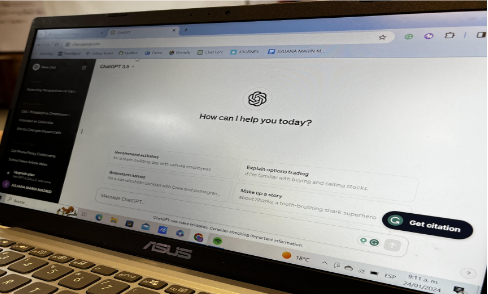
With programs like ChatGPT becoming more and more common in classrooms, the use of technology in education has significantly increased in recent years. To shed light on ChatGPT’s advantages, difficulties, and possible effects on the learning environment, we explore the viewpoints of educators and students in this article.
With more than ten years of expertise, Ms. Andrea Jimenez (an elementary teacher at a Medellín school) says she is excited to include ChatGPT in her lessons. She emphasizes how the application can help students develop their critical thinking and creative thinking skills by giving them an interactive platform to experiment with different writing styles and come up with ideas. She does agree that guidelines are necessary to guarantee that ChatGPT is used responsibly and meaningfully.
“I believe I have a controversial idea, since many ensure that this platform has nearly altered the student’s good habits of analyzing and thinking, but I honestly see this as an opportunity, as if ChatGPT is my assistant and can make my life easier,” Martinez, said.
Mr. Jorge Lopez, another experienced teacher who retired this year and is a physics instructor, comes next. He expresses his misgivings about ChatGPT and embraces technology as a way to improve learning. He talks about issues including possible diversions, plagiarism dangers, and the necessity for children to improve their critical thinking and problem-solving abilities. Furthermore, he stresses how crucial it is to use ChatGPT as an additional tool under careful supervision.
“For a fact, students don’t view ChatGPT like teachers do; they view it as a tool for plagiarizing and leaving behind all problem-solving thinking. Everybody can agree this tool is great, but I see it as almost impossible to implement proper supervision where this platform can be used correctly,” Lopez, claims.
In contrast, high school student Isabela provides a distinct viewpoint regarding the employment of ChatGPT. She values the tool’s help in coming up with ideas and getting past writer’s block, particularly for projects that call for creative writing. Isabella Ramirez, a Grade 11 student in TCS does, however, also recognize the tendency to rely too much on ChatGPT and stresses the necessity of striking a balance between technology and independent work when completing academic assignments.
“I won’t lie; I gave in to temptation and used ChatGPT inappropriately. Most of my students, it seems to me, copy and ask this platform to complete all of their work for them. But I’m teaching myself to resist temptation because I’m afraid I won’t be able to think ever again,” Ramirez, said.
ChatGPT offers a dynamic environment for idea development and conceptual exploration, which can impact one’s ability to think. The application encourages users to express ideas and make real-time revisions to them as they work with it, which helps users enhance their critical thinking abilities. Still, there’s a catch. As Isabella notes, an over-reliance on ChatGPT without a balanced integration of observation and analysis might prevent the development of individual mental processes. To ensure that their cooperative engagement with ChatGPT strengthens rather than weakens their natural cognitive capacities, users must view the tool as an addition to, not a replacement for, their cognitive efforts.
“I know there must be a way to prevent overreliance on ChatGPT,” Jorge states.
The article ends with some thoughts on how ChatGPT and related tools can affect education in the future as they develop. It looks at how teachers might modify their approaches to take advantage of AI, while also making sure that students acquire critical abilities that go beyond merely depending on technology.


